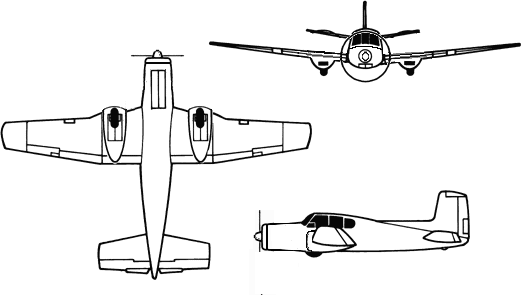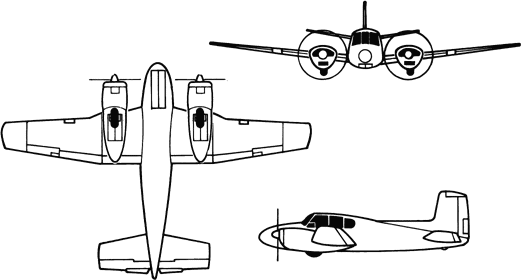 | CivCraft-1 & -2 |  | |||||||||||||||||||||||||||||
|---|---|---|---|---|---|---|---|---|---|---|---|---|---|---|---|---|---|---|---|---|---|---|---|---|---|---|---|---|---|---|---|
The Civil Craft Aviation CivCraft-1 & -2, aka the Air Shuttle, is a civil aviation, all-standard technology aircraft, primarily used for medium- and long-distance passenger/cargo transport. It's actually
Design and Development When the REF departed for Tirol, the authority of the UEG slowly slipped, most especially in the more distant regions (Alaska, Siberia, Inner and Eastern Africa, Central America, and South East Asia). These regions needed reliable transportation just as badly as anyone else, and needed them at a low cost; The UEW also wanted transportation into these regions to enforce their will as best they could (mostly in the form of taxation). The most practical form, once all factors were considered, was by aircraft; Helicopters didn't have the range, and VC-22's were prohibitive expensive- At least, for certain types of clientele. With this is mind, the UEG's law enforcement agencies very quietly approached several aviation companies requesting they develop a plane idea to the needs of these clientele, but with a simple, reliable tracking method; The one best preferred was a an embedment in the planes initial primer or an engine that in and of itself produced a radiological signal (essentially a crude radio) that allowed satellites to track the planes. Though none would take the project up officially (mostly because they did have such planes already on the market), several were willing to release one or two engineers with 'generous severance packages,' many of whom immediately formed a new aviation corporation, Civil Craft Aviation. (During that same period there was a general downturn in the aviation market in general.) To cut costs, all of the engineering involved standard, off-the-shelf technology- No "alien" hardware. (It is rumored that several key figure in the UEG influenced the program- However, xenophobia was pretty common at all levels of Terran society, and LEONARD was hardly the exception.) Civil Craft Aviation was able to produce a working prototype in three weeks; The airframe, avionics, powerplant, everything was up and flying and ready to ship in four weeks. UEG authorities arranged a major loan via Genovesian bankers (who, not coincidentally, had ties to the Mafia). Civil Craft Aviation did their master's bidding one better; They gave it "multi-configurational powerplanting;" That is, it could switch between single- and twin-engine. Twin engine versions had greater speed and lifting power (50% more), but single-engine versions had greater range (50%). The single engine version didn't create as much radiological signal, but it still was rated as strong enough to be detected in orbit. Operational History Unfortunately, the program wasn't the rousing success the UEG had hoped; The first thing the new owners did was strip every single speck of paint off their new planes (how they knew about that nobody's quite sure), and the engine's signal wasn't as strong as the UEG wanted- Satellites could detect "a" signal, but not well enough to pinpoint it. Nevertheless, the purchases of CivCraft-1 & -2 did create a paper trail, which the UEG could follow- Not always perfectly, but they could follow it. Also, the planes could produce enough signal to know when a plane was in the air; With this, more sensitive ground stations would know that someone was skulking around, and be watchful for them. Once the plane's general direction and speed was known, spy satellites could watch the approximate course and know where bases were generally located. By process of elimination, the militry was able to track down and pinpoint these bases; Usually, though, these were left in place; The better to know what they were really up to. During the Invid Invasion (Third Robotech War), these planes served Terran resistance and collaborators alike, and the bases they operated out of equally so; As a result, frags were well-motivated to keep their secrets, and freedom fighters to let the scabs pretend it was secret. Smugglers and legitimate shippers also made use of the bases, mainly as the Invid cared very little or not at all about "human" matters (as long as it didn't interfere with Protoculture production) and local warlords were often hesitant to enforce the laws, since they usually were on the smugglers payroll. Since the CivCraft was (and still is) utterly unsuitable for militry duties in any appreciable sense, the planes, their owners, and their activities were only nominally monitored, looking for information that might reveal an operational plan, and little more. (Far too many of the pilots themselves were scab informants in any case.) Despite the CivCraft's shady (at best) history, the Robotech Expeditionary Forces took the blueprints with them during the Atorian and subsequent campaigns, using them on new worlds they'd liberate (or "liberate"), and as the campaign on any given world would wind down would transfer the local fleet, blueprints, and technical information to local authorities (or "authorities") (along with the Islander and a few others). Name: Air Shuttle. Model Type: Cargo Aircraft (smuggler). Designation: CivCraft-1 & -2. Class: Aircraft. Crew: 2; Pilot and Co-pilot. Passengers: 2 (3 if no co-pilot). MDC By Location: | |||||||||||||||||||||||||||||||
| Fuselage- Hatches (2)- Wings (2)- | 100 20 each 50 each | Tailerons (3)- Engines Nacelles (1 or 2)- | 30 each 50 each | ||||||||||||||||||||||||||||
| Notes: Usual penalties apply. Speed and Statistical Data: | |||||||||||||||||||||||||||||||
| Speed: 270 mph (235 knots, 432 km/h)/405 mph (352.5 knots, 648 km/h). Range: 1,500 mi (1305 NM, 2,400 km)/1,000 mi (870 NM, 1,600 km). Service Ceiling: 30,000 ft (9144 m). Height: 11 ft 6 in (3.51 m). Wingspan: 45 ft 3 in (13.78 m). Length: 31 ft 6 in (9.61 m). | Weight: 5,010 lb (2,270 kg). Power System: 1 or 2 Jeromones RK-184; Output: 340 hp (253 kW) each. Flight System: Standard Aero-Foil effect. Cargo Capacity: 1 ton (905 kg); Sacrificing a half ton (1,000 lbs) can extend range 25%. Cost and Availability: 16,000credit, but is basically always available. Black Market Cost and Availability: Between 1,000 and 50,000credit; Regularly available. | ||||||||||||||||||||||||||||||
| Weapon Systems: The Air Shuttle isn't inherently armed; However, small arms can be carried, and more importantly, some rogues are known to install weapons pods on the wings. | |||||||||||||||||||||||||||||||
| 1. Weapons Pods: Normally wing-mounted, these pods can be dropped as needed. A) M-7 Rocket Launcher: 24 2-inch rocket tubes in 12 rows of 4 each. Each rocket tube has 4 rockets. Purpose: Heavy Assault. M.D.: Each rocket does 2D6 MD. Rate of Fire: Volleys of 6 or 12 times pilots attacks per melee. Range: 12,000'. Payload: 96 per pod. B) External M.R.M. Launchers (2): Mainly for shooting down hostile aircraft, though are excellent for shooting down M.R.M.'s and L.R.M.'s. Primary Purpose: Anti-Aircraft. Secondary Purpose: Anti-L.R.M. Damage: Varies by type used. Rate Of Fire: Volleys of 1 or 2 per pilots attacks per melee. Effective Range: Varies by type used. Payload: 4 (2 per launcher, 2 pods per wing). C) M-12 Fuel Pod: Essentially a modified version of the M-11 Torpedo Pod. In this case, however, it is used as a fuel pod to double the normal range of the craft. D) M-11 Torpedo Pod: An ASW torpedo pod. Carries the Mk-82 Airborne Torpedo, essentially a modified version of the Mk-81 Submarine Launched Torpedo. The initial launch is by a nothing so complicated as releasing it from the latches that hold it to the pylon. The on board hydro-cell motor then takes over as soon as the torpedo splashes. Each pod holds 3 Mk-82's. Purpose: Offensive/Anti-Ship. M.D.: 4D6 times 10 per torpedo. Blast Radius: 40'. Maximum Range: 80 miles. Minimum Range: 5 miles. Rate of Fire: 1 torpedo per pilots attacks per melee. Payload: Each pod holds 3 Mk-82's. | 2. Variable Full-Force Barrier Field: The Variable Full-Force Barrier Field provides additional protection for the vehicle. Purpose: Defense. MDC: 200 per panel; 1,200 total available. NOTE: Each panel MUST still have 1 MDC for the system to continue working. Effect: Provides 200 MDC in each of 06 panels. Range: 40 ft. Coverage Characteristics: A full 360 degrees coverage area around the craft. 3. Other Weapons: Over the course of the last 400 years, over 357 different weaps have been recorded to have been installed on TFJ's, both -21's and -22's. These ranged from single-use black powder rockets to some fairly sophisticated weaps. It seems the main restriction is weight (under 3 tons loaded), length (under 40 ft), and imagination; A few have managed to overcome one of the two requirements with the third. | ||||||||||||||||||||||||||||||
| Features: * indicates those items that are not strictly legal, but common on smugglers and government units. | |||||||||||||||||||||||||||||||
|
| ||||||||||||||||||||||||||||||
| |||||||||||||||||||||||||||||||

